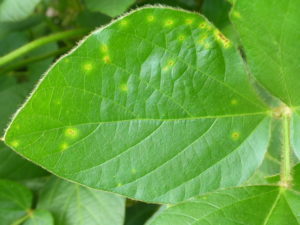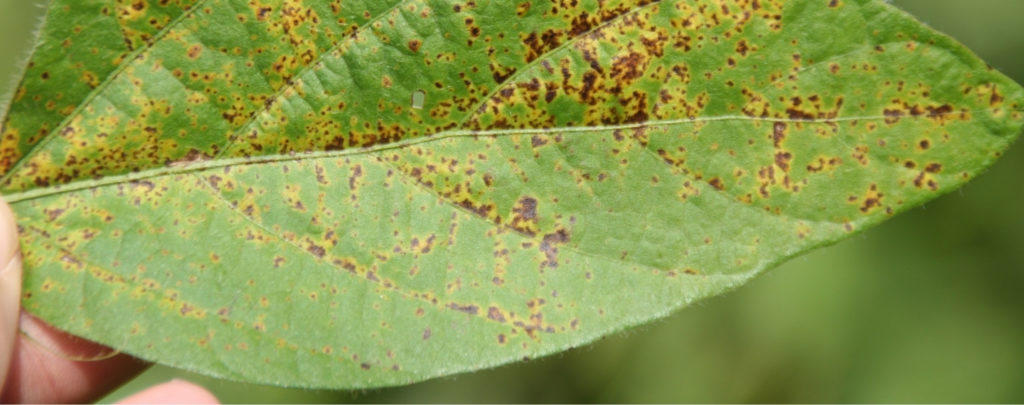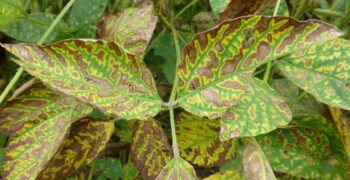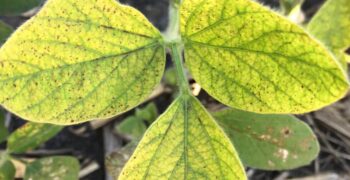Background:
Bacterial Pustule is found in most areas where soybeans are grown. The disease shows up in mid to late season and in hot, wet weather. Lesions can be found in the middle to upper canopy, they will be roughly smaller than a ¼ of an inch. The lesions will be pale green specks with greenish yellow halos, the center will eventually turn dark brown and raised. If lesions are close together they may merge together, causing odd or irregular shapes on the leaf. Infection areas within the field are not located in a certain area of the field, but are rather widespread throughout the field. The pathogen survives in crop residue and is transported by wind and rain and will enter the plant through wounds or leaf stoma.
 Scouting: R1-R7
Scouting: R1-R7
Scouting should be done throughout the growing season but when specifically looking for Bacterial Pustule, scouting should be done between R1-R7. Look in the mid to upper canopy for pale green specks that have greenish yellow halos around the speck. If the lesion is older the center will be raised and a dark brown color. One way to differentiate between bacterial pustule from other diseases is that the leaves won’t become tattered.
Management:
- Rotating to crops such as corn, alfalfa or a small grain crop will help breakup the crop cycle.
- Using tillage to break down residue and reduce the chances of the disease becoming an issue the following year.
- Plant a variety with the most resistance.
- Foliar fungicides are not effective against bacterial pustule.



